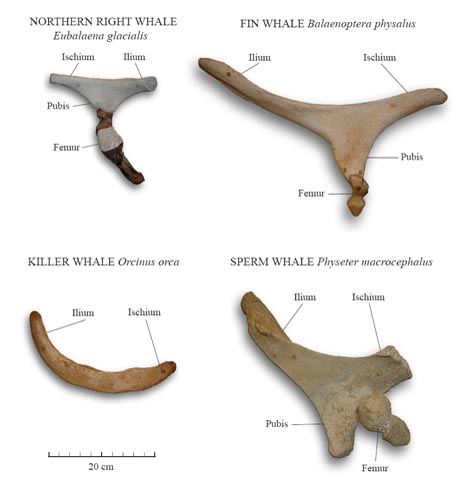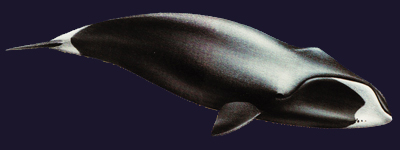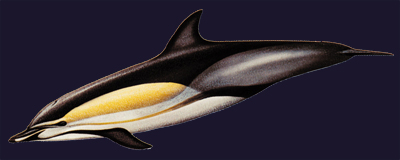Vestigial hind limbs of whales
The pelvic anatomy of whales makes a good example of how evolution has transformed body parts that lost their importance as the animals changed their lifestyle. In modern whales, the pelvic girdle is much smaller than in land living mammals, but there is a considerable variation among species. Bones from the Natural History Collections in Bergen were used by Professor O. Abel in Vienna when he in 1907 described the morphology of pelvic girdles and vestigial limbs of whales. Read the article here (pdf, 39 MB) >>>

LOOK AT DIFFERENT ANGLES >>>
The pelvis is best developed in baleen whales, and especially the right whales (Family Balaenidae). The pelvis of the Bowhead whale/Greenland Right whale Balaena mysticetus shows an Ilium, Ischium, and Pubis. In addition, it has an Acetabulum where the vestigial Femur is attached, and even a short vestigial Tibia. This species is not represented in the Natural History Collections of Bergen Museum, but the Northern right whale Balaena glacialis shows a very similar structure, although Tibia is lacking.
Also some of the fin whales (Family Balaenopteridae) have a piece of the femur in addition to the pelvis. The fin whale Balaenoptera physalus makes an example.
In toothed whales an even more rudimentary pelvis is common. A typical example is the killer whale Orcinus orca, where each of the pelvic bones is reduced to a rod-shaped bone. The anterior part represents the strongly modified Ilium, and the posterior part Ischium. There is no sign of an Acetabulum or a hind limb.
The sperm whale Physeter macrocephalus is special by showing all three pelvic bones, an Acetabulum and a rudimentary Femur.
|



